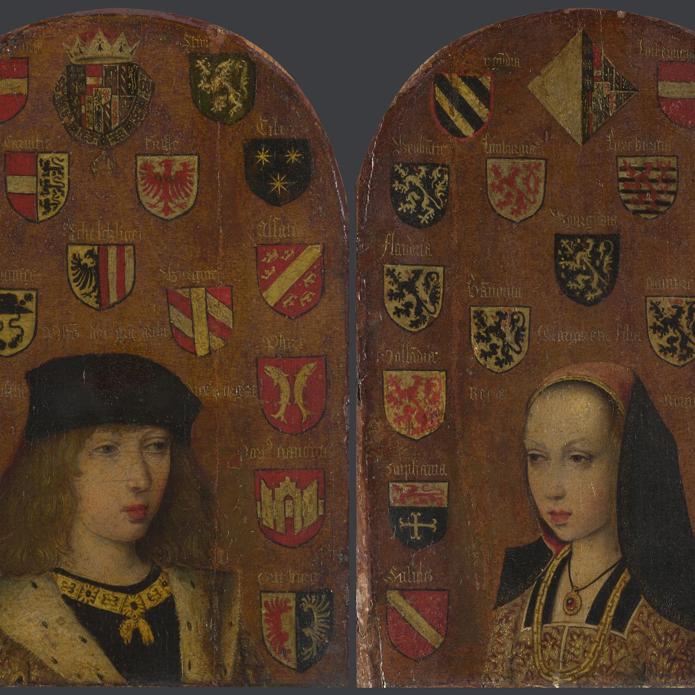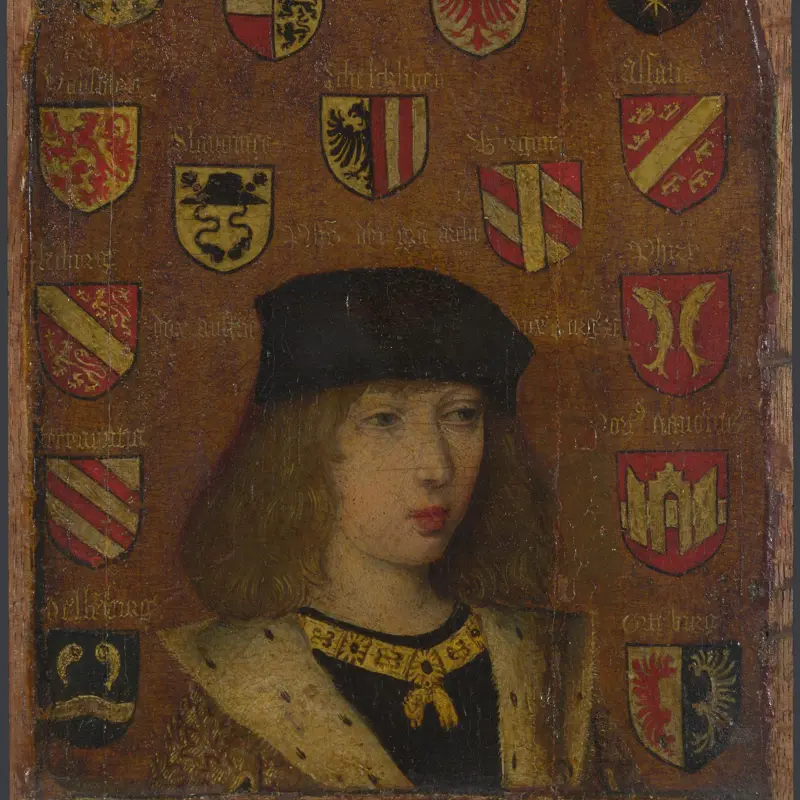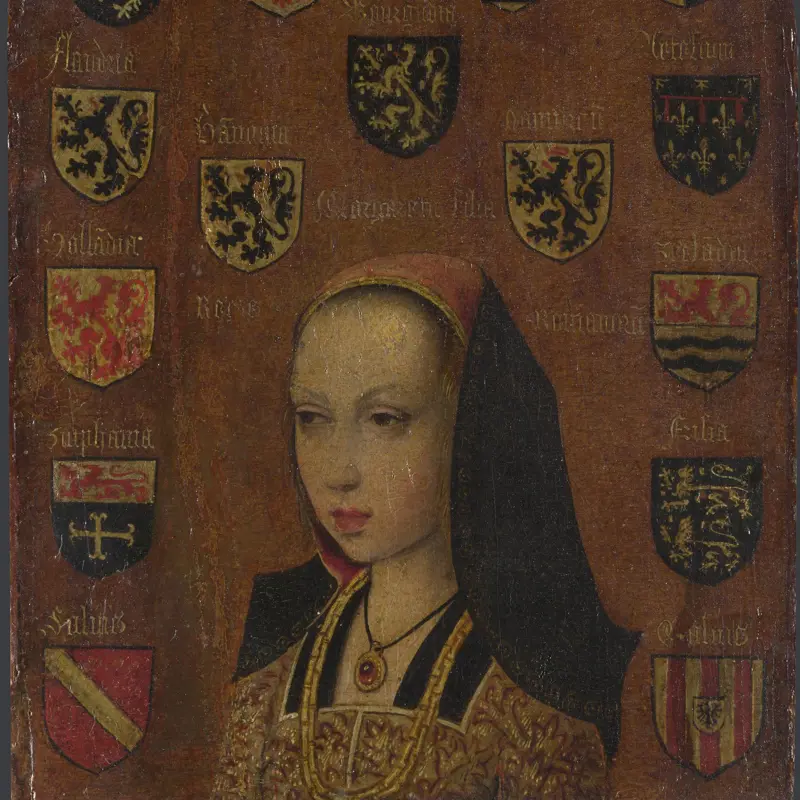Probably by Pieter van Coninxloo, 'Philip the Handsome', about 1493-5
About the work
Overview
This young man with flowing hair is Philip the Handsome, son of the Holy Roman Emperor and founder of the Habsburg dynasty in Spain, so-called because of his fair hair and attractive grey eyes. The painting is one wing of a diptych (a panel painting in two parts). The other, showing his sister, Margaret of Austria, is also in the National Gallery’s collection.
Philip wears the collar of the Order of the Golden Fleece, a prestigious chivalric order founded by Philip the Good, Duke of Burgundy, in the 1430s. The artist has minimised his prognathism – an inherited condition where the lower jaw sticks out forwards, the so-called ‘Habsburg jaw’.
Key facts
Details
- Full title
- Philip the Handsome
- Artist
- Probably by Pieter van Coninxloo
- Artist dates
- Active 1479; died 1513
- Part of the group
- Diptych: Philip the Handsome and Margaret of Austria
- Date made
- About 1493-5
- Medium and support
- Oil on wood (probably oak)
- Dimensions
- 22.6 × 15.5 cm
- Inscription summary
- Inscribed
- Acquisition credit
- Salting Bequest, 1910
- Inventory number
- NG2613.1
- Location
- Not on display
- Collection
- Main Collection
- Previous owners
Provenance
Additional information
Text extracted from the ‘Provenance’ section of the catalogue entry in Lorne Campbell, ‘National Gallery Catalogues: The Fifteenth Century Netherlandish Schools’, London 1998; for further information, see the full catalogue entry.
Exhibition history
-
2010Jan Gossaert's RenaissanceThe National Gallery (London)23 February 2011 - 30 May 2011
-
2015Fernando II of Aragón; The King who Imagined Spain and Opened it to EuropeThe Aljafería Royal Palace10 March 2015 - 7 June 2015
-
2021Renaissance Children: Art and Education at the Habsburg Court in MechelenMuseum Hof van Busleyden26 March 2021 - 25 July 2021
Bibliography
-
1945Davies, Martin, National Gallery Catalogues: Early Netherlandish School, London 1945
-
1953M. Davies, The National Gallery, London, Les Primitifs flamands. I, Corpus de la peinture des anciens Pay-Bas méridionaux au quinzième siècle 3, 2 vols, Antwerp 1953
-
1955Davies, Martin, National Gallery Catalogues: Early Netherlandish School, 2nd edn (revised), London 1955
-
1987Davies, Martin, National Gallery Catalogues: The Early Netherlandish School, 3rd edn, London 1987
-
1998Campbell, Lorne, National Gallery Catalogues: The Fifteenth Century Netherlandish Paintings, London 1998
-
2001
C. Baker and T. Henry, The National Gallery: Complete Illustrated Catalogue, London 2001
About this record
If you know more about this work or have spotted an error, please contact us. Please note that exhibition histories are listed from 2009 onwards. Bibliographies may not be complete; more comprehensive information is available in the National Gallery Library.
Images
About the group: Diptych: Philip the Handsome and Margaret of Austria

Overview
This teenage brother and sister were the heirs of royalty and future rulers themselves. Philip the Handsome and Margaret of Austria were the children of the Holy Roman Emperor, Maximilian I, and Mary of Burgundy. Each is identified by an inscription in gold above their head and by the coats of arms at the top of the arch. Around them are further coats of arms representing the states and towns their parents governed.
Philip (1478–1506), who was later King of Castile, wears the livery collar of the Order of the Golden Fleece – a prestigious chivalric order – which he received in 1481. Margaret (1480–1530) was to become one of the effective rulers of her day as regent of the Netherlands. This small diptych (a painting made up of two parts) was easily portable, and must have been done in the early 1490s, when various projects for Philip’s and Margaret’s marriages were matters of intense concern.


